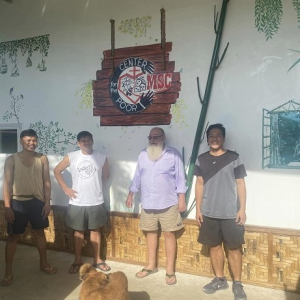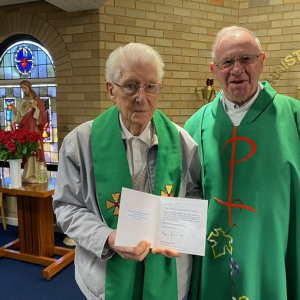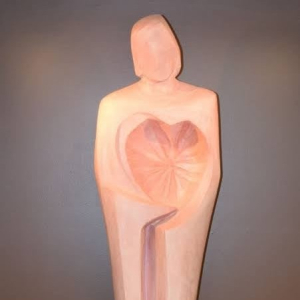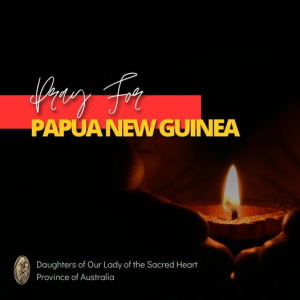Peter MALONE
Mother of the Bride
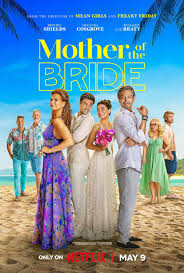
MOTHER OF THE BRIDE
US, 2024, 88 minutes, Colour.
Brooke Shields, Miranda Cosgrove, Benjamin Bratt, Rachael Harris, Sean Teale, Chad Michael Murray, Michael McDonald, Wilson Cruz, Tasneem Roc.
Directed by Mark Waters.
After so many Father of the bride films, it seems only right to have, even belatedly, to have a Mother of the Bride. And the narrative attraction is always the wedding.
This is a brief, rather slight story, with some moments in London, some moments in San Francisco, but most of the film very attractively in Thailand, in Phuket. (And, the credits list shows that most of the crew for the making of this film were from Thailand.)
Audiences who enjoyed Julia Roberts and George Clooney in A Ticket to Paradise may find the plotline here rather familiar. The romance in the exotic setting, the preparations for the wedding, and tensions between the two central characters with reconciliation.
Brooke Shields served as Executive Producer of the film and it is very much hers, reminding audiences of her long career as a child star, films and television, author. And there is a range of predictable enough characters, the pushy best friend, the pleasant gay couple, the bossy marriage organiser as well as the central couple and their wedding preparations.
Nothing particularly startling, more of an easy, undemanding watch.
- The title, expectations? Focus on the mother rather than the father?
- The situation, Emily, in London, her talents, company and sponsorships, remains with RJ, the lavish proposal and setting, Emmy going back to inform her mother?
- The portrait of Lana, Dr, on the phone, demanding, reassuring the staff, determined? Welcoming Emmy home? The comedy and drama of their interactions, the protective mother, the background of the long dead father, Lauren and her control, Emmy counterbalancing her mother? The information about the wedding in Thailand, all the organisation?
- The attraction of the ties settings? Full cat?
- The situation, R and her control, bossy, calling Lana Mumma Winslow, the timetable, the schedule, overriding objections, the location, the costumes and dress, the dancing rehearsals, putting Lana’s toast speech…?
- The revelation that RJ was Will Jackson son? The meeting up of all the old friends and memories of studies at Stanford? Tensions? Janice and her interventions? The gay couple? The gradual revelation of the story of the past, will walking out, Lana changing her phone number, their marriages, children, 30 years of no communication?
- Lucas, his presence on holiday, Dr, the contact with recruiting Lana? His romantic interest, stepping back?
- The ups and downs of the moods, tension between Lana and Will, gradual mellowing, playing of the attraction to Lucas, the dense and Mona Lisa, the drive, stranded, the boat? The crisis and the behaviour at the wedding? The issue of Katrina, her arrival, with the ring, the proposal?
- Emmy, doubts, discussions with RJ, his love for her, standing up for herself, confronting her mother, the ceremony itself, the pastor, the response, the aftermath, the tensions, the throwing of the bouquet?
- Everybody watching Katrina’s arrival, the resolution of the situation?
- The final credits and everybody happily dancing?
Mercy/ 2023
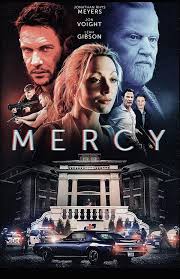
MERCY
US, 2023, 85 minutes, Colour.
Leah Gibson, Jonathan Rhys Meyers, Jon Voight, Sebastien Roberts, Anthony Konechny, Patrick Roccas, Anthony Bolognese.
Directed by Tony Dean Smith.
Mercy is a brief action thriller, set in the American city. However, there is an introduction to the central character, a doctor serving overseas, the situation with the soldier struck with bombs, her husband, his excluding the bomb to save her. They have a son.
That the action takes place at the Mercy Hospital, sympathetic doctor, Michelle talented surgeon, pleasant domestic situation with her son’s birthday and the gift of a ball.
In the meantime, the FBI have arrested the presumed he had to a criminal gang, Irish background, who dominate in the city, led by the patriarch, played by Jon Voight, and his psychopathic son, played by Jonathan Rhys Meyers. The criminals ambush the FBI, the son shoots his brother who survives and is rushed to hospital.
Most of the action, familiar enough but always with some tension, is the patriarch and the members of the gang arriving at the hospital, the patriarch wanting a peaceful restitution of his son, the psychopathic son intent on covering his shooting his brother, and with some psychopathic henchmen.
The focus on is on Michelle, Leah Gibson, highly decorated military, martial arts expert, tactics, guns. While she is able to shield the wounded man with the help of a rookie FBI agent, she hides her son in a locker but, he is discovered and becomes the porn for an exchange.
It all builds up to 10 situations, the kindly doctor bomb strapped to him, to intervene with the FBI outside the besieged hospital, hostages, his setting of the explosion to save others. And, within the hospital, the fears, accreditation between father and son, building up to a confrontation between the psychopath and Michele, saved by a swift move by the son.
Brief, popular action.
- American gangster thriller? The Irish background?
- The title, the hospital? Themes of mercy and not forgiving?
- The introduction, Michelle, overseas service, doctor, patience and trauma, her husband, the bomb, is detonating it to save her? At home, surgeons skills? Relationship with her son?
- Quinn gang, the arrest of Ryan, interrogation, his silence, intended as the heir to Patty? The threats? The FBI? Transporting him, surveillance by the gang, Sean and his intervention, the pursuit, the ambush, the shootout, Sean and his shooting Ryan? The shooting of the agents? Taking the victims to the Mercy Hospital?
- Dr Terrance, the hospital, friendship with Michelle? Will be on his birthday, the gift of the ball, the plans for the football match? The arrival of the victims? Michelle going to help? Bobby waiting, the encounter with Patty, the friendly talk? The setup for the ambush in the hospital, the siege, and Michelle hiding Bobby in the cupboard?
- Patty, patriarchal status, favouring Ryan, his criticisms of Sean? The golf game, his associate, the hospital, the interrogations, wanting to find his son? Sean and the gang, the wild young man, his shooting the hospital clerk, and his severing his ear?
- The contrast with the techniques? Patty, wanting his son, wanting no violence? Sean, covering himself for shooting his brother, his henchmen, the reactions to the shootings?
- The rookie FBI agent, moving Ryan, Michelle and the treatment, her quick thinking, the attacks, her martial arts schools, and shooting, drawing on her military experience?
- Confrontation between Paddy and Sean, the truth is told, the anger? The physical conflict, and he wounded, surviving and taken away in the ambulance?
- The hostages, the threats, finding the clown and his group, joining the others? The security man, initially asking for parking fees, his being knocked out, Michelle want him to disconnect the surveillance? Her skills, hiding Ryan, attending him? The buildup to the confrontations, the deaths?
- Finding Bobby, his being held as hostages, for the exchange? The final confrontation between Sean and Michelle, his holding Bobby, will be kicking him, Michelle shooting Sean?
- Popular action material?
Atlas
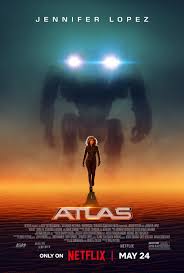
ATLAS
US, 2024, 118 minutes, Colour.
Jennifer Lopez, Simu Liu, Sterling K.Brown, Gregory James Cohan, Abraham Popoola, Mark Strong.
Directed by Brad Peyton.
In 2001, Steven Spielberg directed the film, AI. While the reality of Artificial Intelligence was known, it was comparatively early days for the movies to explore the repercussions of AI, of robots, of collaboration between humans and artificial intelligence, conflicts.
This theme has continued very strongly through the following tickets.
In one sense, this is familiar material here. However, with computer-generated effects continually improving, this exploration has its spectacular moments, machines, robots, space travel, battles and conflicts.
However, this is a Jennifer Lopez film. She acts as Executive Producer as well as starring. While there are some supporting roles, especially from reputable actors like Sterling K.Brown and Mark Strong, the main focus is on Jennifer Lopez as a technology analyst, Atlas, is called on to confront a rebel robot threatening humanity through his knowledge, technological skills and the creation of a robot army.
While there is an introduction to the theme, especially the pursuit of a vicious robot, his being trapped and destroyed, yet his head surviving connected to machinery, challenging humans to confront his maker, Harlan (Simi Liu). There is a history between Atlas and Harlan, her mother having created him and the daughter feeling his being favoured over her and her resentment and action leading to potential disaster.
As an adult, Atlas is rather humourless, single-minded, agreeing to go on a mission to the planet where she has discovered Harlan is based.
The latter part of the film, Atlas is contained within the giant transformers -like robot was a very pleasant speaking voice (Gregory James Cohan) and a pleasant manner which she doesn’t respond to well. However, there has to be some kind of bonding for the success of the mission as well as for Atlas becoming more human herself. The interplay between Atlas and the transformer robot, whose name is Smith, bring some welcome lightness of touch to the serious proceedings.
So, a mission, a confrontation with Harlan, mission accomplished – and the world is saved until the next AI human-threatening movie.
- The popularity of this kind of futuristic science-fiction? Advanced technology, space exploration? The development of AI, I created characters, skills and technology, overcoming humans, creating an army of robot warriors?
- The photography, technology, space travel, the combat sequences, the transformer like armoured robots, the locations of different planets? The musical score?
- The mood set with cascade, robot, confrontations, fight, destruction, Atlas confronting him, his body missing, but his head linked to the controls? His later reappearance, the multiple Cascas?
- The credibility of the situation, the future, the scientists, creating the AI robots, the powers, codes, beyond human capabilities, the revolution, need for the pursuit of the Arch robot, the tactics, the expedition and disaster, at the centre survival, communication with Smith? Atlas and her background with Harlan?
- The introduction to Gen Boothe, his plans, the discussion with Banks, the difference of opinion, especially towards Atlas? The decision for the expedition, the preparation of the Rangers? The issue of Atlas, her background, her mother is the scientist, her growing up with Harlan, her antagonism? Her role as an analyst rather than a warrior?
- The introduction to the Transformer -like robots, the sequence with Zoe getting the cup of coffee? Importance of these robots?
- The expedition, the flight, the attack, the disaster and destruction? Banks disappearing? Atlas, single-minded, humourless, being protected by Smith, Smith and his voice, programmed you human, the directions, wanted them to synchronise, her refusal, the searching of the remains, planning strategies, her being wounded, Smith’s methods of treating the leg? Language, humour, sarcasm – and Smith adapting?
- There are ultimately bonding, working together, Atlas and her wariness, antagonism towards Harlan? The revelation of the background, her feeling neglected by her mother, her mother favouring Harlan, the antagonism?
- Harlan, eventually appearing, his control, his abilities, his capture of banks, getting information after torture? Atlas captured, the collaboration with Smith, getting free, Banks and his help? The confrontation with Harlan and his robots, destruction?
- Atlas, returning, mission accomplished, booths visiting her, her new robot protector – and the pleasant review acquaintance with Smith?
- The popularity of this kind of futuristic AI scenario in the movies of the 2020s?
Bete, La/ The Beast
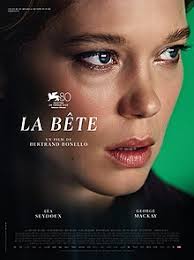
THE BEAST/ LA BETE
France, 2023, 146 minutes, Colour.
Lea Seydoux, George Mackay.
Directed by Bertrand Bonillo.
Quite a number of reviewers and bloggers who admire this strange and unusual film state that it is “not for everyone”. And, as this reviewer watched the film, a greater realisation that this time he was part of “everyone”.
On the one hand, writer-director, Bertrand Bonillo, has been very ambitious in the his intended themes as well as in their execution. And, while so many have been intrigued, this reviewer felt rather detached while watching, not drawn into the themes, interesting as they are, and not attracted by the characters and the situations in which they find themselves.
The film opens, in fact, quite arrestingly, the central actress, Lea Syedoux, standing on a plain film set, table with a knife, and the voice-over of the director coaching her for her performance. Then, we are in 1910, an evening in a French salon-gallery, echoes of the Gilded Age, elegant costumes and decor, behaviour, some bizarre male paintings, conversation, and introduction to the musician, Gabrielle (lea Syedoux), happily married, but being shadowed throughout the evening by Louis (in a role originally for French actor Gaspard Ulliel, killed in an accident but now taken by British actor George Mackay, speaking in both French and English).
And then we are in 2044, memories of a disaster in 2025, now a world of AI, taking over the workplace, and a taken-for-granted program whereby humans submit themselves to a process, even just the shutting of an eye, quietly eliminating anything passionate in their nature and they will become calmly and contentedly subservient. Louis is there for an interview. Gabrielle is a strong personality, reluctant to let go any passion.
There is talk of previous lives, their influence, then needing to be remembered, examined, purged. Which means that the other time era in The Beast is 2014, in the US, Gabrielle intending to succeed in a modelling career, house sitting at the time of an earthquake. But the focus now is on Louis, obsessed, photographing himself, an egocentric voice-over, lamenting his inability to relate to women, Savage repercussions on his psyche, an encounter with Gabrielle, a kind of surrender and shocking consequences.
So, another exploration of the consequences of AI and its power for dehumanising. The 2044 era highlights this futuristic science fiction. The 2014 episode is jolting. The 1910 era, which does constitute a major part of the film we have seen many times before.
- The title, the unseen beast, the beast within? AI and its beastly qualities?
- Blend of drama, historical drama, contemporary drama, futuristic scenarios, the rule of AI, control of human life?
- The intentions of the writer-director, the future and AI, the present, the influences on past, previous lives, the influence of the past and the present? Continuity? Differences? The future situation, AI in control, doing the work, the unemployed, the effect of brainwashing, purging the memories, purging emotionality, human behaviour but robotic?
- The time eras, the opening with the actress being directed, playing, the green screen background, the table with the knife, the voice of the director, the response of the actress, her performance, dramatising, the beast, the knife? The later reference repetition of this scene?
- The 1910 sequences, elegant society, socials, costumes and decor, formalities, the gathering, the conversation, the art exhibition of the artist, the naked man, the comments? The repetition of these sequences throughout the film?
- The introduction to Gabrielle, musician, her husband, the relationship, devotion? The encounter with Louis, his age, in comparison with Gabrielle, his following her, the conversations, memories of Rome and Madame Butterfly, or Naples, or their never having met? The range of the conversation, the attraction? The development of the relationship in later sequences, going to Madame Butterfly, leaving early, the discussion about the dolls, Gabrielle’s impassive face as the model for the dolls, the symbolic dolls and human creation? The factory, the floating, the images of Paris being flooded, Gabrielle and Louis together, her husband and his business, the spark, the fire, the attempts to escape, the locked exits, the couple drowning?
- The 2014 sequences, Gabrielle in the US, modelling and sessions, her minding the house?
- Louis, more prominent in this sequence, his image of himself, photographing himself, his explanations of himself, self-importance, relationship with others, his lack of relationships with girls, a virgin, upset? The earthquake and the consequences for Gabrielle, the owner phoning and broken vases? Her going into the street, wanting companionship, talking with Louis, his resistance, the man in the street, the sexual encounter, her imagining Louis, ousting the other man? The buildup of the relationship? The pool, Louis talking Gabrielle, the shooting?
- 2044, the modern mansion, the pool? Gabrielle and her work, touching the monoliths for temperature? Her interview, wanting something more? The situation, AI and control, the anonymous voice and interview, the process of eliminating the memories and their influence? The passion? The interview sequences, Gabrielle and going to America, the Civil War, 1910, 2014? The process of elimination not working? Her strong feelings? The encounter with Louis, ordinary, going to the interview, the later meeting, in love, passion, the possibilities, Louis manifesting that he had gone through the process, working for the State, loss of passion? Gabrielle in collapse and usually distress, her being the exception, the prospect of her future?
Cannes Uncut
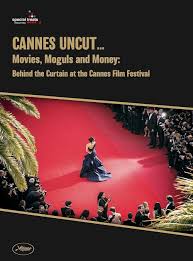
CANNES UNCUT
UK, 2023, 90 minutes, Colour.
Thierry Fremaux, Lea Seydoux, Tilda Swinton, Juliet Binoche, Sharon Stone, Quentin Tarantino, Mike Leigh, Ken Loach, Mark Cousins, Lynne Ramsay, Wim Wenders, Sean Baker, Mark Adams, Chris Pickard.
Directed by Richard Blanshard, Roger Penny.
For those who love the movies, who are fans of the stars, those interested in International film festivals, this is a very enjoyable 90 minutes. While there is the focus on fandom, the range of talking heads chosen gives a great deal more substance to this documentary than might have been expected.
The Cannes film Festival is the most prestigious Festival in the world, followed by such festivals as Berlin and Venice, and an increasingly wide range of international and local festivals.
The documentary offers an overview of the development of the festival, Mussolini’s initiatives in the 1930s to create a festival in Venice but, by the end of the decade the festival becoming an instrument of promoting films approved of by the government. As a counterbalance, the film industries decided to create a free festival in Cannes, but its first session at the time of the outbreak of World War II and its being cancelled. Discussions after the war led to the new establishment of the festival on the French Riviera, the selection of films in 1946 indicating prestige, the several hundreds who attended the festival in its earliest years, the increasing prominence, the crowds, the glamour, Hollywood presence, the campaign in 1968 to stop the festival because of social upheaval, the continued history of festival highlights leading to the early 2020s.
At the centre of the film is the longtime director, Thierry Fremaux, offering a great deal of commentary throughout the film, the history, the ups and downs, the controversies including the issue of the eligibility of Netflix and streaming features for the competition.
While there are constant visuals that hold the attention, the glimpses of styles, the glimpses of stunts (and quite elaborate stunts at the Festival (Jerry Seinfeld and the cable for The Bee Movie rather surprising, Jack Black photographed falling into the water for Shark Tale), a great deal of the walking up of the red carpet, the photographers, the posing, the celebrities…
Quite a number of significant directors and actors speak to camera, prominent are Tilda Swinton, Lea Seydoux, Mike Leigh, Ken Loach, the film historian, Mark Cousins, Lynne Ramsay and with the two writers of the film, Mark Adams and Christopher Pickard. Oliver Stone has many observations about being rejected by the festival, especially by previous director, Gilles Jacob, his experiences of the 1980s and 1990s. There are scenes with Juliette Binoche when she was younger, praise of Sharon Stone, something from Wim Wenders and Sean Baker.
Certainly not definitive but, just as certainly, interesting, some issues for thought, and entertaining.
MSC Center for the Poor, Philippines
MSC Center for the Poor, Philippines
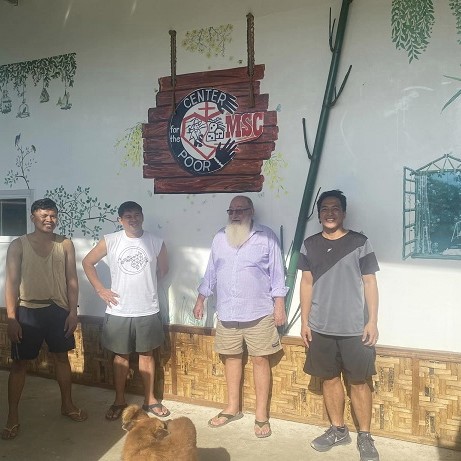
Fr. Roger Purcell, msc is the Director of the MSC Mission Office Australia. He visited the Philippines last May 6-20, 2024 to check and monitor some projects supported by the MO Australia.
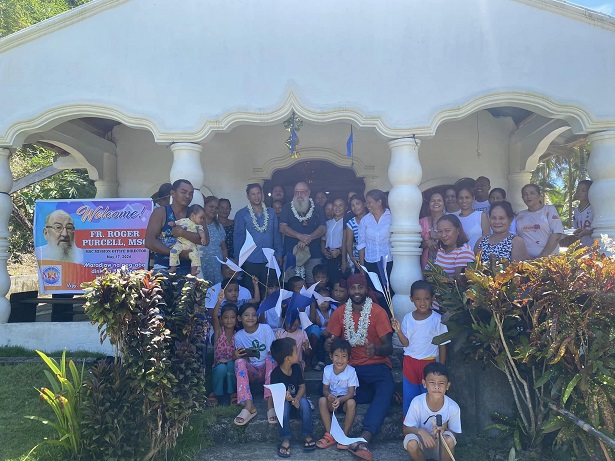
He was also able to meet some collaborators, A working arm of the Missionaries of the Sacred Heart, we are a grassroots, non-profit organization dedicated to caring for people and the environment. And beneficiaries of the projects and discussed matters to intensify our partnership with them.
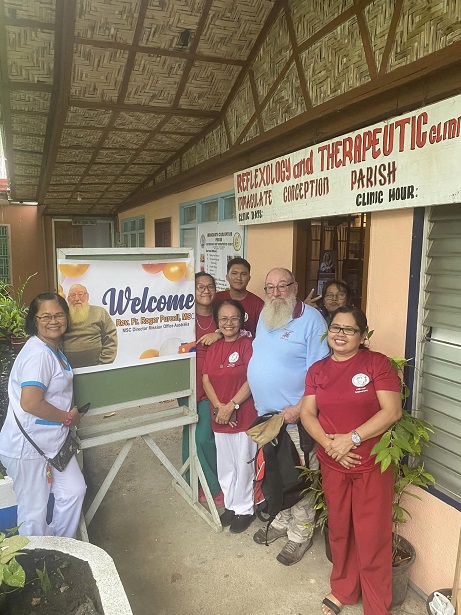
We would like to thank Fr. Roger and the MO Australia for this opportunity, to be with us and the people who have been part of the Mission Office over the years.
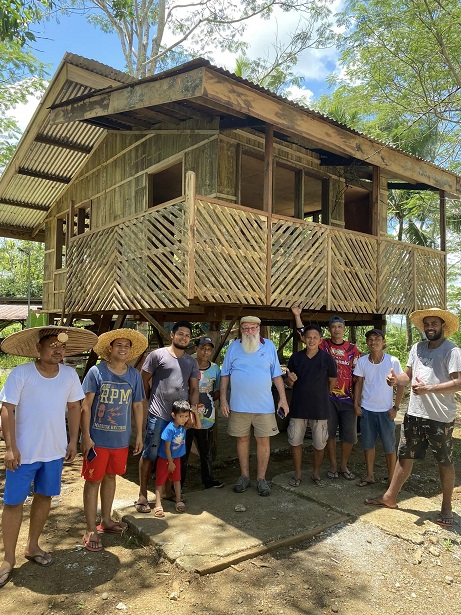
We also thank all the communities who helped us in preparing and organizing Fr. Roger’s visit.
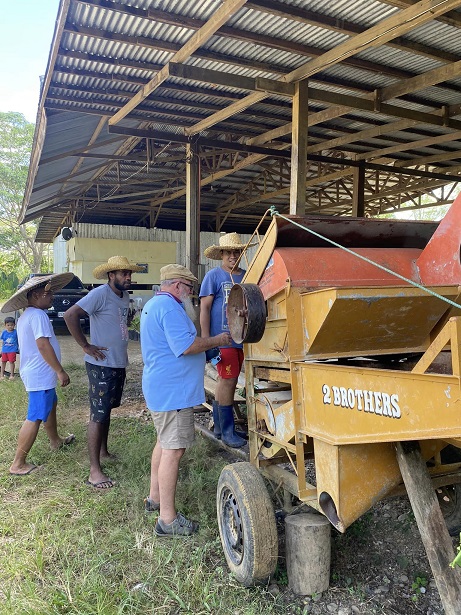
The MSC Center is a working arm of the MSC Phil. Province established in 2018. This grassroot organization advocates to taking care of the well-being of the people and the environment by providing services to the community such as scholarship program, clean water projects, livelihood, outreach program and emergency response.
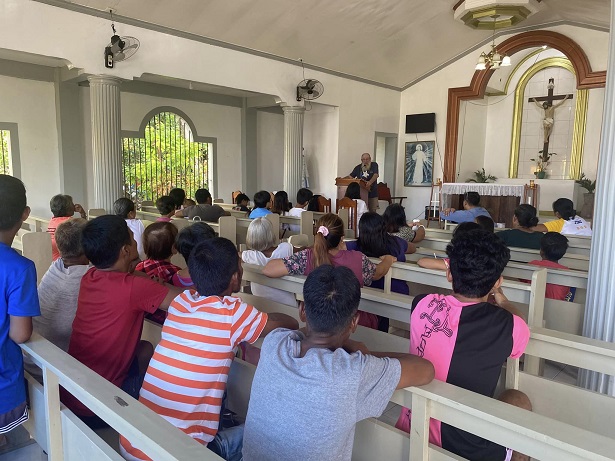
Meanwhile, the MSC Center for the Poor Agriculture Cooperative (CEPAGCO) dedicated to support environmental programs, livelihood of the local farmers for food sustainability and security, promote cooperativism and community building.
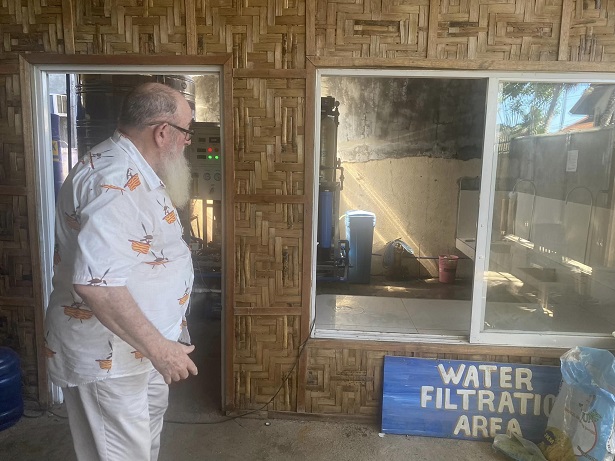
It was established in 2020 in the midst of the global pandemic. Today, the MSC CEPAGCO has been growing its membership and has impacted many lives of the people in different communities.
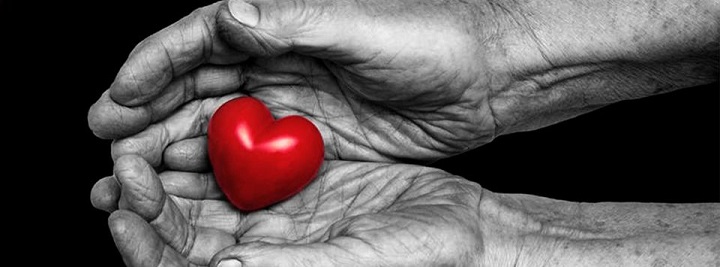
Congratulations to Fr Richie Gomez MSC and the MSC Centre for the Poor Agricultural Cooperative, who were awarded the 2023 Villar Sipag Award for being one of the Outstanding Community Enterprises in the Philippines!
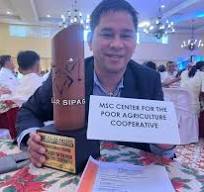
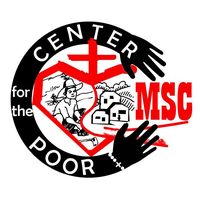
Monday MSC photos, near, far and further
Monday MSC photos, near, far and further

NEAR: Celebrating Patrick Sharpe, 90th birthday, with Peter Guy who has celebrated 50 years a priest
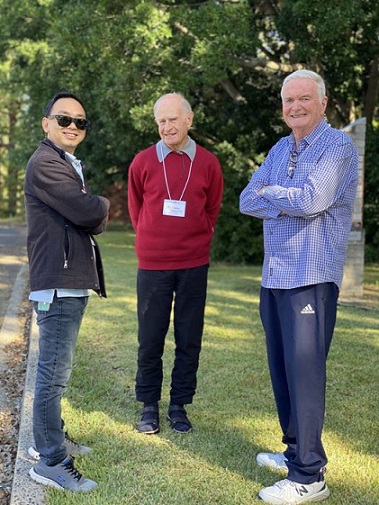
Confreres glimpse, Khoi, Terry Herbert, Bob Irwin
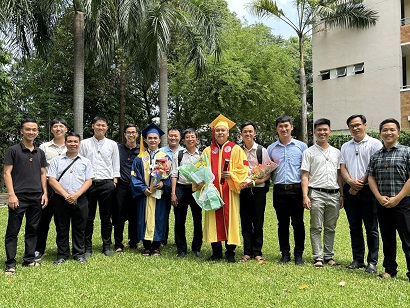
Far: Vietnam, our students finish the academic year
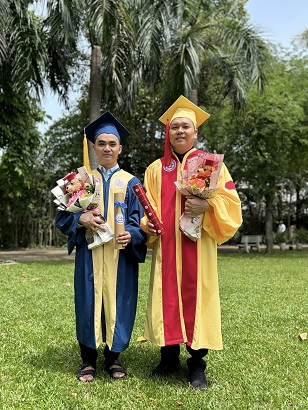
And some graduates (Photos, MSC Vocations Facebook page)
And further: For those who have visited our US Province,
New USA Provincial Office
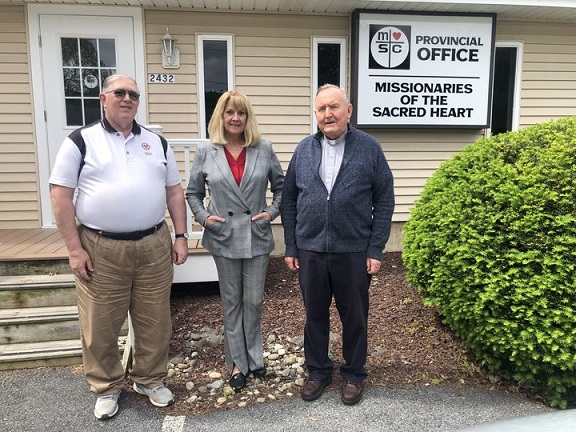
On October 15, 2023, as part of a downsizing initiative, the USA Provincial Office was moved to Center Valley, PA. The MSC Community in Aurora, Illinois, was closed and the Aurora properties are now for sale. These properties have been in existence since 1925! All USA/MSC community members are now located in northern New York, eastern PA, and in California
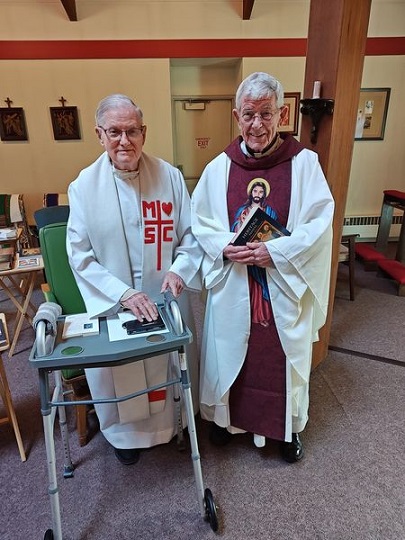
We celebrate the 65th anniversary of ordination to the priesthood of Fr Vincent Freeh and Fr Leon Weisenberger God has blessed our MSC community with these long serving missionaries who both served in Papua New Guinea. Fr Leon was there for 50 years!
Some Significant June Days for the Chevalier Family, 2024
Some Significant June Days for the Chevalier Family, 2024
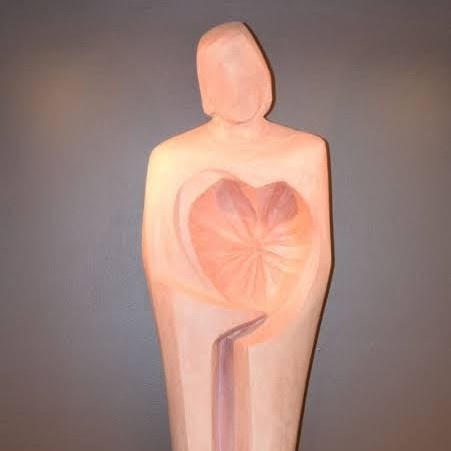
Feast of the Sacred Heart, 7th June
1 June, 1940
Mother M Electa, MSC, promises to build a chapel in honour of Our Lady of the Sacred Heart, in Hiltrup, Germany, to seek protection for the Congregation and its works during World War II.
3 June, 1874
Fathers Chevalier, Vandel and Jouët renew their profession before Pope Pius IX.
4 June, 1980
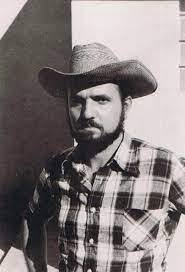
Father Jose Maria Gran Cirera, MSC, of the Spanish Province, is assassinated in Chajul, Guatemala. Fr José María Gran Cirera was shot repeatedly alongside his friend and sacristan Dominic Batz while leaving Mass on horseback on June 4th 1980.
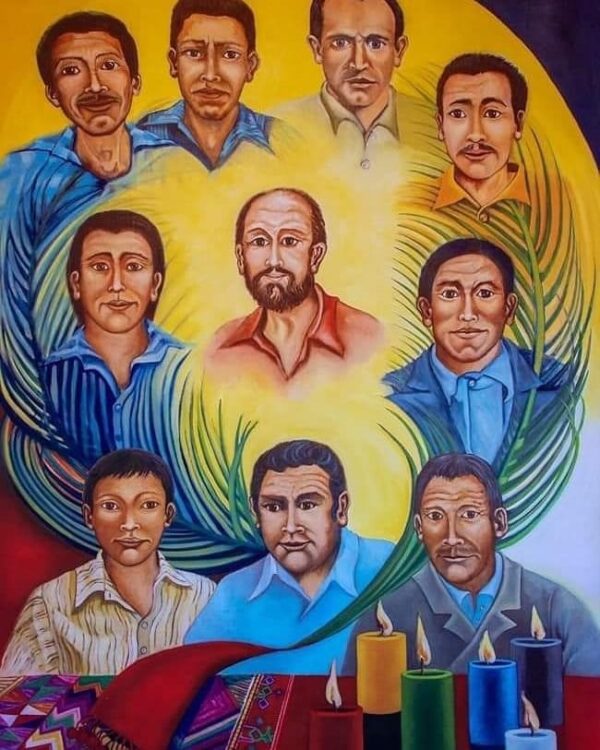
Now the feast day of the Martyrs of Quiche.
5 June, 1900
Archibald Shaw, first Australian-born MSC priest, ordained in Sydney.
5 June, 1944
During World War II, New Guinea Missionary Sisters were imprisoned in Ramale Camp, New Britain, in PNG.
5 June, 1986
Canonical erection of the first MSC house in Seoul, Korea.
6 June, 1846
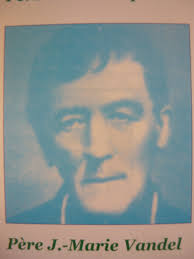
Jean-Marie Vandel is ordained a priest at Fribourg, Switzerland, at the age of 37 years.
6 June, 1914
Father Hubert Linckens begins prolonged visitation of the Australian MSC province: 1914-1921.
6 June, 1980
Erection of the MSC novitiate in Manoku, Abemama, Kiribati.
7 June
Feast of the Sacred Heart
7 June, 1861
The Vicar General of Bourges blesses the first part of the Church of the Sacred Heart in Issoudun. In the window near the altar of Our Lady of the Sacred Heart, is a stained-glass representation of Our Lady of the Sacred Heart, her first image. This same stained-glass window is today located above Our Lady's Chapel entrance door, situated inside the Basilica.
9 June, 1983
The three Generalates, Missionaries of the Sacred Heart, Daughters of Our Lady of the Sacred Heart and the Missionary Sisters of the Sacred Heart meet together for the first time. The first meeting took place at the MSC Generalate, Via Asmara in Rome.
10 June, 1854

Father Charles Piperon, a significant early member of the Missionaries of the Sacred Heart is ordained priest for the Diocese of Bourges.
10 June, 1855
Authorized to take the title of Missionary of the Sacred Heart, the young Chevalier ceases his functions as curate in Issoudun. He takes up the role of parish priest of Issoudun more than 20 years later in 1872.
12 June, 1874
On the Feast of the Sacred Heart, Pope Pius IX signs the decree of Approbation of the MSC Society. Father Chevalier also offers Pius IX a petition, asking him to consecrate the whole Church to the Sacred Heart of Jesus.
12 June, 1885
Watertown USA: first profession of Pierre L’Esperance, the first MSC from the New World.
12 June, 1970
The first mission in Peru, entrusted to the North German MSC Province since 1938, becomes a Region.
13 June, 1891
Rome: the Congregation of Bishops and Regulars issues a decree regarding the “sanationes”. It prescribes also that the General Assistants must reside with the General; Father Jouet, therefore, is no longer Assistant but remains General Procurator.
13 June, 1946
The Vicariate of Papua is divided into the Vicariate of Port Moresby and the Prefecture of Samarai. Father A. Sorin (France) is appointed Vicar of Port Moresby and Administrator Prefect of Samarai
.
14 June, 1851
Father Chevalier and eleven other seminarians are ordained priests in the cathedral of Bourges by Cardinal Dupont.
14 June, 1937

Louis Vangeke, MSC, is ordained the very first priest for the Papua New Guinean Catholic Church. In 1970, he became Auxiliary Bishop of Port Moresby, PNG, and then Bishop of Bereina, PNG, until his retirement in 1979. He died in 1982.
15 June, 1851
Father Chevalier celebrated his first Mass in a small chapel (no longer in existence) in the garden of the major seminary in Bourges.
16 June, 1868
First General Assembly of the Third Order of the Sacred Heart in Montluçon. Father Guyot is its General Director, in the name of father Chevalier. It is a Third Order for women without vows and is associated with the MSC congregation from 1865 to 1874.
16 June, 1950
Father Archibald Bryson (Australia) concluded negotiations for the establishment of the MSC mission in Nagoya and is now in charge of the Japan Mission.
17 June, 1851
Father Chevalier receives his first appointment: curate in the parish of Ivoy-le-Pré. He remains in this parish for 7 months before taking his second appointment in Châtillon-sur-Indre.
18 June, 1971
Erection of Curitiba- PR, Brazil, as MSC Region, entrusted to the Belgian Province.
18 June, 1982
The MSC residence at Suva, Fiji, ready since January is blessed by Bishop Paul Mea MSC.
18 June, 1986
Canonical erection of the Union of Francophone Africa (UAF). It is placed directly under the superior general.
19 June, 1885
Father Henry Verius and the brothers Salvatore Gasbarra and Nicola Marconi (Italy) leave Thursday Island for Yule Island, on board ship of Ed Mosby.
19 June, 1940
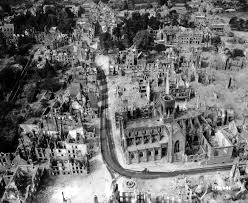
At 8:30am, Issoudun is bombed: 100 people died and many are wounded. The historic presbytery from which Father Founder was evicted in 1907, is destroyed.
20 June, 1882
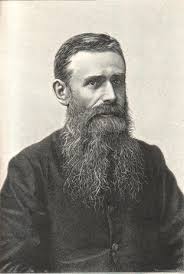
Father Navarre is appointed Superior of the little group making its way to the mission of Melanesia.
22 June, 1938
The first two MSC appointed to Peru, Fathers B.Sievers and J.Petermeyer, leave from Hiltrup for Lima.
23 June, 1919
The German MSC are forced to leave the Apostolic Vicariate of the Marshall Islands.
24 June, 1915
During the First World War, Missionary Sisters in New Britain (PNG) are imprisoned.
24 June, 1946
Canonical erection of the Spanish MSC Province.
26 June, 1859
Laying of the first stone of the new sanctuary of the Sacred Heart in Issoudun by Monsignor Caillaud, Vicar General of Bourges.
26 June, 1984
Sister Klara Sietman, MSC, is elected as 6th Superior General of the MSC Sisters.
28 June, 1928
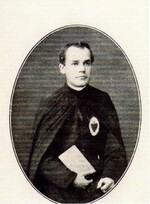
Father Arthur Lanctin, MSC, 2nd Superior General of the MSC, 1901-1905, dies in Issoudun.
30 June, 1850
Jules Chevalier is ordained to the Sub-Diaconate, in the Chapel of the major seminary in Bourges.
30 June, 1887
The first MSC arrive at Quito, Ecuador. This mission will end in 1894.
Wabag Diocese, Enga Province, Papua New Guinea, Massive landslide
Wabag Diocese, Enga Province, Papua New Guinea, Massive landslide
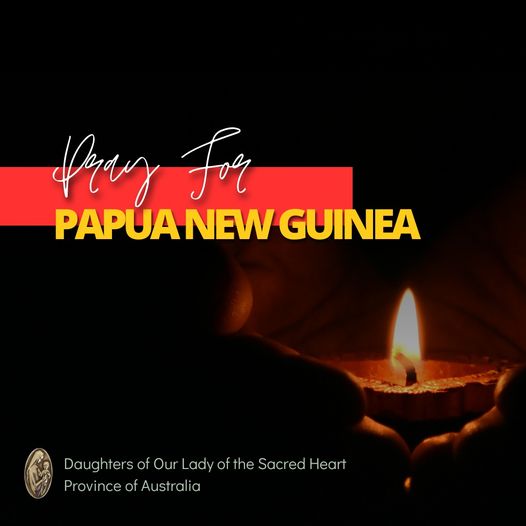
Approximately 3950 people were residing at a village Kaokalam up in the mountain, Ward 7 Yambali – Mulitaka, Kasap Parish, Lagaip deanery in Catholic diocese of Wabag, Porgera district, Enga Province, Papua New Guinea. We could reach the disaster affected area by road 2 and half hours from the Wabag Diocese headquarters.
Roger Purcell MSC, Director of the MSC Mission Office circulated this report from Wabag.
Since this was written, the number of deaths has risen extensively.
Total population is around 3950 people. Both the Side of the mountain less people were affected.

More than 1500 likely impacted by a that flattened a village Kaokalam on Friday 24.05.2024 at 3.00am local time in Papua New Guinea (PNG).
According to the Survivors and local community members 178 people were buried and more than 255 houses were sunk; 5 families totally buried and out of 250 families some members escaped and some died. So far local people found 4 dead bodies and one leg of a man. People from one whole clan Panges belonging to the Kipul tribe, are affected by these disasters. More homes could be at risk if the landslide continues down the mountains at any time because nearby mountains have also cracked already.
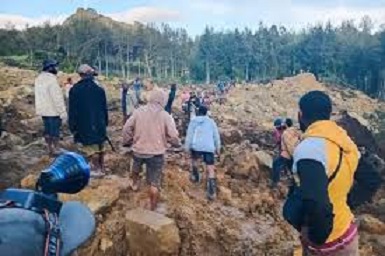
Unicef
1322 survivors from 250 families need immediate assistance basic needs; such as food, clothing, medical assistance, temporary shelters, water, blankets, mats, dignity kits (sanitary items) and other household items, cooking utensils and other assistance like Garden tools, seeds, seedlings, permanent / bush materials houses, class rooms, Health centers, Water facilities, sanitation, church etc.. in the near future resettling them.
As a Wabag diocese we respond quickly; in terms of food to the directly affected people by the disaster.
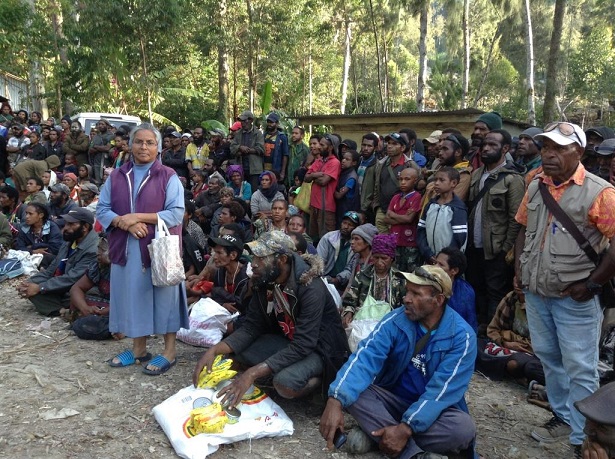
We also provided medical supplies to the minor injured people and major injured people; we brought them to our health centers and Wabag hospital and they are under mediation.
Landslide have left debris up to 8 meters deep across 200 square km, cutting off road access, which was making relief efforts difficult but people of good will helped us to reach the spot with our supply’s food and medicines.
Initial estimates death were 100 people and now the figure has increased to around 178 and may even go higher if they find the bodies.
We suspect that it’s not only a massive landslide but also an earthquake because of the big creaks from the rocky mountain to the near river as you see in the pictures.
Thank you very much for the condolence messages, stand with us in solidarity, heartfelt concern being with us in your prayers and blessings.
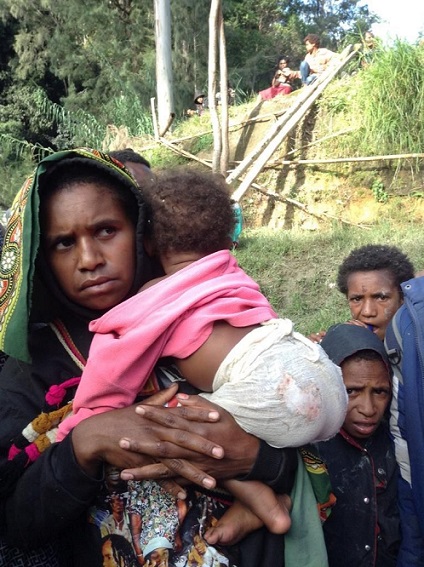
Catholic Diocese of Wabag, Enga Province, Papua New Guinea
Bp. Arnold Orowae, Bp. Justin Ain, Sr. John Mary, Sr. Amutha, Fr. Stephen Yange and Wabag Diocese Caritas team
On Patrick Dodson
On Patrick Dodson
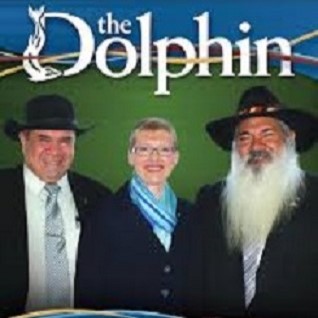
Cover of the Monivae College magazine, The Dolphin
Earlier this week on this site, a post on this week’s National Reconciliation Week, there was a note on Pat Dodson.
As time has passed, many do not know much about him and have asked.
This summary is from the website for Brittanica.
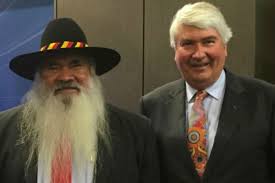
With Frank Brennan SJ
Patrick Dodson (born January 29, 1948, Broome, Western Australia, Australia) is an Australian activist and politician who became one of Australia’s most influential Indigenous leaders and who is known as the “Father of Reconciliation.”
A member of the Yawuru people, Dodson was the son of an Irish-Australian father and an Aboriginal mother. When Dodson was age 2, his family moved from Western Australia to Katherine in the Northern Territory to escape the Western Australian laws which prohibited mixed-race families. Both of his parents had been imprisoned in the early years of their relationship as a result of their refusal to adhere to government-imposed racial segregation. In 1960, Dodson, then age 13, and his six siblings were orphaned. Although an aunt and uncle of Dodson’s battled with authorities to prevent the children from being sent to live in a Catholic mission settlement, Dodson, his younger brother Mick—who would become a renowned activist and scholar in his own right—and two of their siblings were made wards of the state.

In 1961, two priests from the Missionaries of the Sacred Heart arranged scholarships for Patrick and Mick to finish their education at Monivae College, a Catholic boarding school in Hamilton, Victoria, at which they were the only Aboriginal students. At Monivae, Dodson not only proved to be a conscientious and accomplished student, but he also was elected college captain and served as captain of the school’s Australian rules football team. At this juncture he was already displaying strong leadership skills and the potential to become a powerful voice for Indigenous rights.
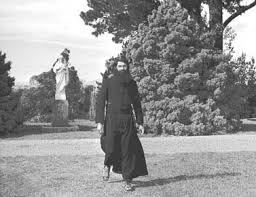
After graduating from Monivae, Dodson studied for the priesthood. [Adding, he made his novitiate in 1968, professed February, 1969, studied at Sacred Heart Monastery, Canberra, some courses at ANU, then Croydon and a B.Theol from the Yarra Theological Union).
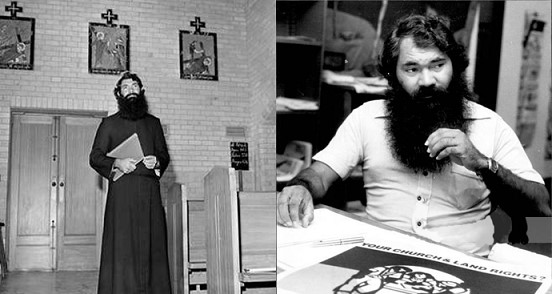
When he was ordained in 1975, Dodson became the first Aboriginal person to be ordained a Catholic priest in Australia. As a priest, Dodson sought to balance and blend his faith in Catholicism with his Aboriginal spirituality. However, after many years of struggling to reconcile the two, Dodson left the priesthood. This marked the beginning of his journey of activism for Indigenous rights and his commitment to the reconciliation movement. In 1981, Dodson joined the Central and Kimberley Land Councils, and eventually he was appointed the director of both influential land rights organizations. In that capacity, Dodson successfully negotiated the return of the giant monolith Uluru/Ayers Rock to its traditional owners, the Anangu people.
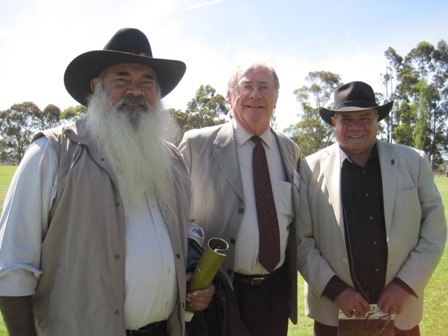
Pat and Mick Dodson with Paul Castley MSC who taught at Moninvae in the 1960s, Cadets Passing Out Parade at Monivae, 2012
Dodson made some of his most acclaimed and influential contributions to the pursuit of rights for Aboriginal peoples as a royal commissioner appointed in 1989 to investigate the deaths of Aboriginal persons in custody. It was his work as the founding chairperson of the Council for Aboriginal Reconciliation (CAR) from 1991 to 1997, however, that led to his becoming known as the “Father of Reconciliation.” He also served as cochair of the Expert Panel for Constitutional Recognition of Indigenous Australians (2010–16). Dodson was devoted to building constructive relationships between Indigenous and non-Indigenous peoples through mutual respect and dialogue. His achievements in this realm were profound, as he brought fundamental issues of the country’s past to the forefront. After retiring from the CAR, Dodson continued his advocacy for constitutional change and recognition of Indigenous rights. He served as chairperson of Nyambu Buru Yawuru Ltd. (2010–16).
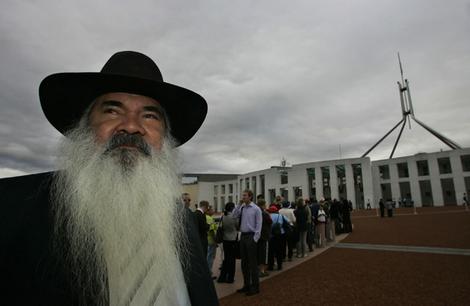
In 2016 Dodson was appointed as the Australian Labor Party’s replacement for Joe Bullock. Dodson also served as an adjunct professor at the University of Notre Dame in Broome. Dodson was recognized as a National Living Treasure, and in 2008 he was awarded the Sydney Peace Prize.
